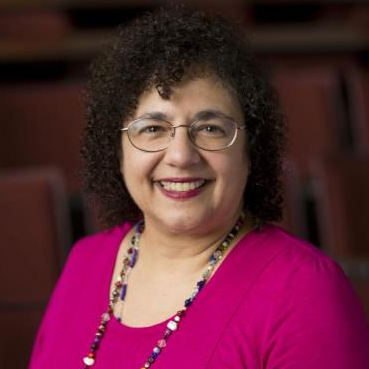Race and Religion: New Approaches to African American Religions
A special issue of Religions (ISSN 2077-1444).
Deadline for manuscript submissions: closed (15 August 2017) | Viewed by 66848
Special Issue Editor
Interests: African American literature and theory; postmodern theory; African American Buddhism; Buddhist-Christian studies
Special Issues, Collections and Topics in MDPI journals
Special Issue Information
Dear Colleagues,
Black people do everything. That’s what I tell my classes when I teach African American religions. We are Buddhists, like Alice Walker and Jan Willis. The Interior Ministry of Israel ultimately recognized the Mosley family, African American converts, as Jews (Judy Maltz, “African American Converts Recognized as Jews in Israel.” Haaretz, 28 May 2015 (available online: http://www.haaretz.com/jewish/news/.premium-1.658593). As James Houk has pointed out, African religious systems have incorporated Catholic saints, Hindu gods, and Kabbalistic practices (James Houk “The Orisha Religion in Trinidad.” in African American Religious Cultures. Edited Stephen C. Finley and Torin Alexander. Santa Barbara: ABC CLIO, 2000, pp. 287–288). We are in the Nation of Islam and also in traditional Islam. We are also among the “nones”, those who do not identify themselves as religious. In addition, we have seen our thinkers, like Martin Luther King, Jr., who utilized the work of thinkers from H. Richard Niebuhr to Gandhi, “Africanize” theory and theology (I suspect, for example, that President Barack Obama was influenced by the thoughts of Edward Said). Without losing our African pasts, we, like all global citizens, are engaging the brave new world of religious diversity.
What do we make of African American innovations, alignments, syncretisms and significations on religious thought, from theory to theology, and practice, from our roots, like Orisha devotion and Hoodoo, to new practices, like Buddhism? Do we see retrenchments into fundamental—and I do not mean this in a necessarily negative way—practices in the black church that have sustained the community since slavery? How are we using media, art, music, and other forms to practice and innovate in religion? What impact has technology had on African diaspora religions?
This Special Issue invites innovative emerging young scholars and some of us older scholars, too, in African diaspora religions, to write about their insights into the diverse landscape of African American religious thought and practice. This Special Issue will be, necessarily, interdisciplinary and daring, as we look at new forms of belief and practice.
Prof. Dr. Carolyn J. Medine
Guest Editor
Manuscript Submission Information
Manuscripts should be submitted online at www.mdpi.com by registering and logging in to this website. Once you are registered, click here to go to the submission form. Manuscripts can be submitted until the deadline. All papers will be peer-reviewed. Accepted papers will be published continuously in the journal (as soon as accepted) and will be listed together on the special issue website. Research articles, review articles as well as short communications are invited. For planned papers, a title and short abstract (about 100 words) can be sent to the Editorial Office for announcement on this website.
Submitted manuscripts should not have been published previously, nor be under consideration for publication elsewhere (except conference proceedings papers). All manuscripts are thoroughly refereed through a double-blind peer-review process. A guide for authors and other relevant information for submission of manuscripts is available on the Instructions for Authors page. Religions is an international peer-reviewed open access monthly journal published by MDPI.
Please visit the Instructions for Authors page before submitting a manuscript. Submitted papers should be well formatted and use good English. Authors may use MDPI's English editing service prior to publication or during author revisions.
Benefits of Publishing in a Special Issue
- Ease of navigation: Grouping papers by topic helps scholars navigate broad scope journals more efficiently.
- Greater discoverability: Special Issues support the reach and impact of scientific research. Articles in Special Issues are more discoverable and cited more frequently.
- Expansion of research network: Special Issues facilitate connections among authors, fostering scientific collaborations.
- External promotion: Articles in Special Issues are often promoted through the journal's social media, increasing their visibility.
- e-Book format: Special Issues with more than 10 articles can be published as dedicated e-books, ensuring wide and rapid dissemination.
Further information on MDPI's Special Issue polices can be found here.





